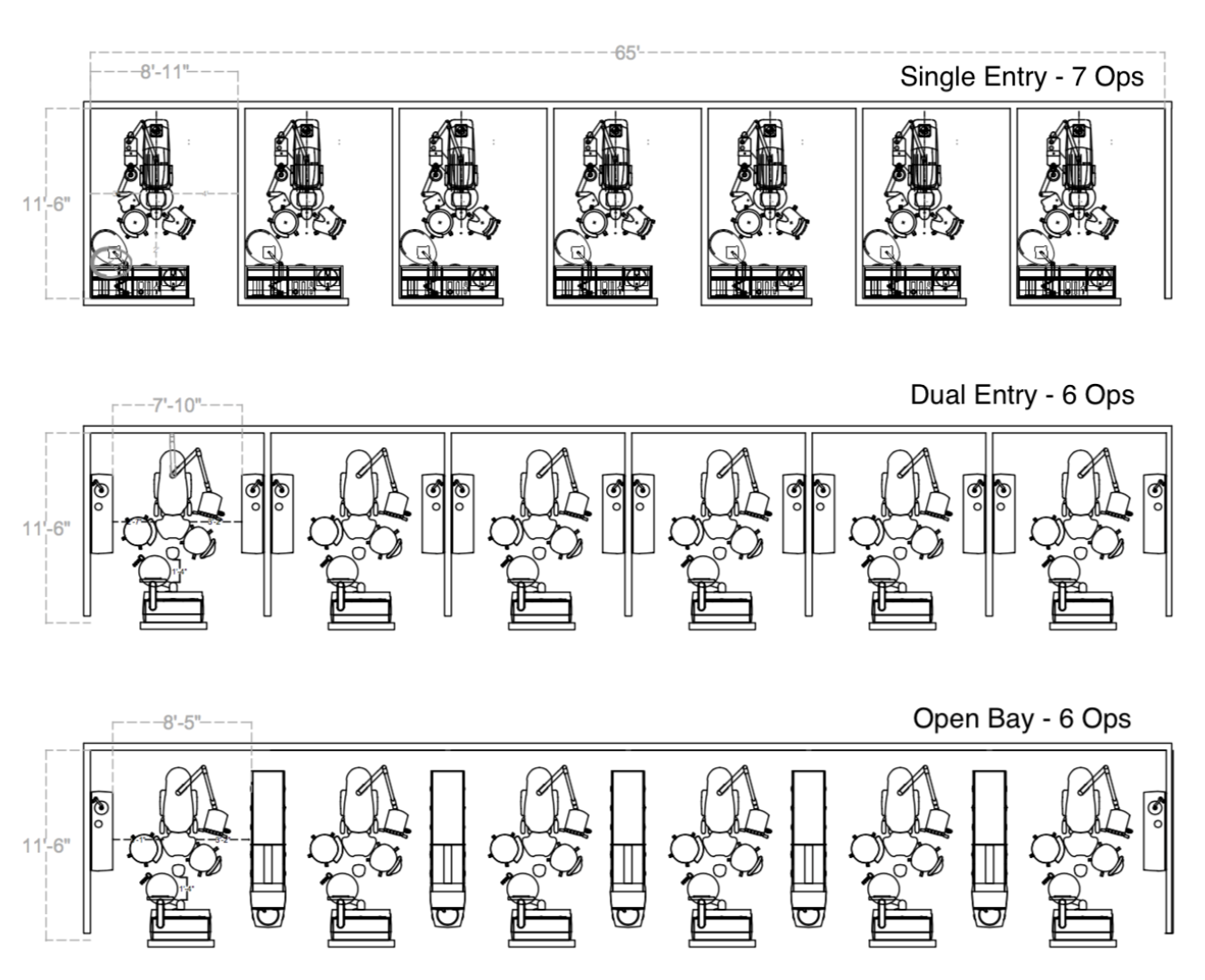Why Intelligent Design Matters – Rethinking Operatory Layout
Intelligent design is the foundation of a successful dental office. Too often, I see projects that launch with pre-set plans and layouts—without optimizing space, workflow, or aesthetics. Many in the industry default to what’s familiar, missing key opportunities to elevate the patient experience, improve profitability, and streamline clinical flow.
One of the most critical early design decisions is operatory layout strategy. This choice impacts every aspect of how the office functions day-to-day and how it will scale into the future.
There are essentially three primary ways to configure operatories in a dental practice. The example below highlights a single-entry layout, and why it’s worth strong consideration:
1. Capacity Advantage – More Ops in the Same Space
In a 65' span, a single-entry layout can often accommodate one additional operatory compared to a dual-entry design. In larger offices, this difference can grow to two or even three extra operatories—without sacrificing comfort or functionality. That’s a major advantage in long-term production potential and ROI.
2. Operatory Space & Ergonomics
In this example, the layout provides generous space around the chair, including 4 feet of clear space on the doctor’s side. This supports an open, comfortable feel and unrestricted movement for both the doctor and assistant.
Critically, the design accommodates full access to the 12 o’clock position—essential for ergonomic treatment of the upper palate (mirror view) and lower arch (direct vision). Many outdated layouts ignore this position entirely, limiting clinical flexibility.
There’s also intentional space for guest seating and patient belongings, creating a more thoughtful and accommodating experience.
3. Privacy & Sound Isolation
Single-entry design naturally enhances patient privacy. It creates a quiet, enclosed space where patients feel secure discussing their health history or simply relaxing while waiting for the doctor.
From a team perspective, the reduction in noise pollution is significant. Gone are the days of blasting music to cover up suction, handpieces, and HIPAA-sensitive conversations. With a door closed, the difference is night and day.
4. Integrated Storage & Technology
Modern rear cabinets give assistants easy access to all supplies without needing to leave the room or spin to a side cabinet—supporting uninterrupted patient care and reducing unnecessary movement.
New technologies and 21st-century call systems allow assistants to stay focused in the operatory rather than running back and forth for materials.
5. Debunking the “Clutter Myth”
Some believe that single-entry designs create cord clutter and trap assistants—but that’s only true with outdated, non-integrated equipment. As you can see from the overhead view, when the equipment is fully integrated and strategically positioned, the space is clean, open, and efficient.
Final Thoughts
This early layout decision shouldn’t be made based on what you’re used to. Forget how you worked in the past—your new future shouldn’t be designed by looking backwards.
A well-executed single-entry design creates a better patient experience, a more productive clinical environment, and a quieter, more focused workspace. Let’s take a deeper look at the strengths and tradeoffs of this approach:


